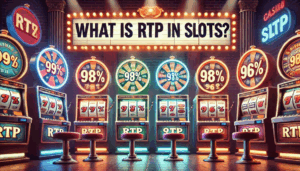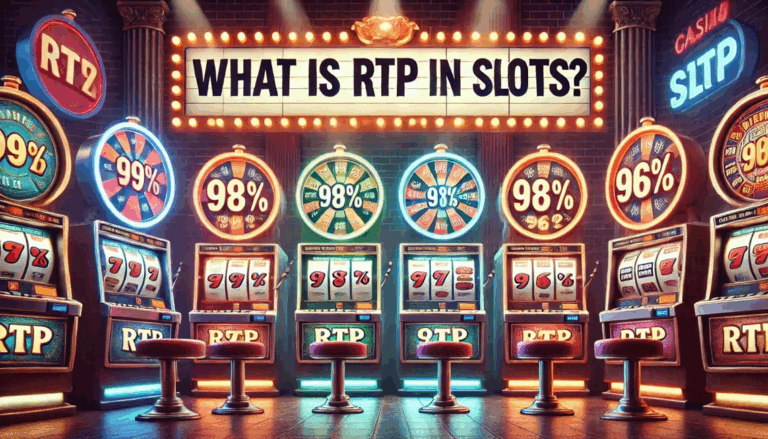The captivating lights, immersive sounds, and promise of instant wealth make slot machines the dominant revenue source in casinos worldwide. Behind their colorful exteriors lies a sophisticated science of addiction—deliberate design choices that keep players spinning for hours. This exploration reveals how modern slot machines are carefully engineered to create compelling experiences that border on hypnotic, transforming casual players into dedicated gamblers.
The Psychology of Variable Rewards
At the heart of slot machine addiction is what psychologists call variable ratio reinforcement—the same mechanism that makes social media so habit-forming. Unlike fixed reward systems, slot machines deliver unpredictable payouts that create powerful psychological effects.
“Variable rewards are substantially more addictive than predictable ones,” explains Dr. Maria Hernandez, behavioral psychologist specializing in gambling disorders. “When rewards come at unpredictable intervals, the brain releases more dopamine, creating a stronger drive to continue the behavior.”
This neurological response explains why players continue despite losing money. The anticipation of potentially winning triggers more dopamine than actual wins, creating a cycle where near-misses become almost as rewarding as victories.
Near-Misses: The Engineered Illusion of Almost Winning
Modern slot machines incorporate sophisticated near-miss programming that displays winning symbols just above or below the payline. These almost-wins create the illusion that players are constantly on the brink of success.
Research published in the Journal of Gambling Studies found that near-misses activate many of the same reward circuits in the brain as actual wins. This neurological trickery keeps players engaged through hours of losing spins, each near-miss reinforcing the belief that a big win is imminent.

Slot designers carefully calibrate the frequency of these near-misses to maximize their psychological impact. Too many would reveal the manipulation; too few would fail to maintain player engagement. The mathematical sweet spot—typically 30% of spins—creates perfect conditions for extended play.
Multi-Line Play: The Illusion of Winning While Losing
Perhaps the most insidious innovation in modern slot machines is multi-line play, where players can bet on dozens or even hundreds of paylines simultaneously. This design creates what researchers call “losses disguised as wins” (LDWs).
When a player wagers on 50 lines and wins back credits on 10 lines, the machine celebrates with animations and sounds despite the player having lost 80% of their bet. These LDWs trigger the same dopamine release as genuine wins, creating an artificial sense of success during sustained losses.
Studies show that inexperienced players often cannot distinguish between actual wins and LDWs. The constant positive reinforcement maintains engagement even as their bankroll steadily declines—a phenomenon researchers call “reward overvaluation.”
Sensory Manipulation: The Audiovisual Seduction
Modern slot machines employ sophisticated audiovisual techniques to enhance their addictive qualities:
Strategic Sound Design
Sound effects are precisely engineered to maximize excitement and reinforce behavior. Wins are celebrated with harmonious tones in C major—a key demonstrated to evoke positive emotions. Meanwhile, near-misses feature rising sounds that create anticipation without the resolution of a win.
Casinos maintain carefully calibrated background noise levels to mask the sounds of other players losing while amplifying winning sounds. This selective acoustic environment creates the impression that winning is common.
Visual Stimulation
Flashing lights, animated sequences, and vibrant colors aren’t merely decorative—they’re calculated stimuli that increase arousal and engagement. Modern machines use complex animation that extends the celebration of wins, prolonging the dopamine release.
High-resolution displays with cinema-quality graphics create immersive experiences that distract players from monetary losses by creating emotional connections to characters and narratives.
Speed of Play: Eliminating Reflection
Traditional slot machines featured a natural pause between spins as players pulled the lever. Modern digital slots have eliminated this reflection moment:
- Digital machines allow 600-1,200 spins per hour (vs. 300 for mechanical slots)
- Auto-play features enable continuous play without player interaction
- Shortened celebration animations prevent interruption of the play cycle
This accelerated pace prevents the activation of the brain’s prefrontal cortex—responsible for critical thinking and self-control—keeping players in an emotionally reactive state where decisions are driven by impulse rather than rational thought.

The Mathematics of Addiction
Behind every slot machine is sophisticated mathematical programming designed to create addictive patterns:
- Hit frequency calibrated to provide small wins just often enough to reinforce play
- Volatility engineered to deliver occasional larger wins that reset player satisfaction
- Bet structure designed to gradually escalate player investment through the session
“Slot mathematics isn’t random,” explains former slot designer Marcus Chen. “Every aspect is calculated to maximize what we call ‘time on device’—keeping players in their seats as long as possible.”
Data-Driven Personalization
The most concerning evolution in slot addiction design is the emergence of player tracking and personalized experience adjustment:
- Loyalty cards track player behavior across thousands of sessions
- Algorithms identify individual vulnerability patterns and preferences
- Machines may adjust volatility and reward schedules to match player profiles
This data-driven personalization represents the frontier of addiction engineering, where machines learn what specific patterns keep individual players engaged longest.
Regulatory Failures and Industry Influence
Despite growing evidence of deliberate addiction design, regulatory oversight remains limited. Industry representatives argue that players bear personal responsibility, while casino operators frame concerns as moral panics rather than public health issues.
In most jurisdictions, regulations focus narrowly on ensuring mathematical fairness (that machines deliver their advertised payout percentages) while ignoring the psychological mechanisms that make them addictive.
The Human Cost
The consequences of these addiction-optimized designs extend beyond financial losses. Problem gamblers report severe impacts including:
- Depression and anxiety disorders
- Relationship breakdown and social isolation
- Financial devastation including bankruptcy
- Elevated suicide risk compared to other addictive disorders
For vulnerable individuals—particularly those with pre-existing anxiety, depression, or impulse control difficulties—modern slot machines represent a particularly hazardous form of entertainment.
Conclusion: Designed Dependency
Modern slot machines represent the perfect storm of psychological, sensory, and mathematical manipulation. Their design isn’t accidental but the product of decades of refinement aimed at maximizing player engagement and expenditure.
Understanding these mechanisms doesn’t fully immunize players against their effects, but awareness is a crucial first step. As technology continues advancing, the sophistication of addiction design will only increase—making critical awareness of these techniques more important than ever.
The flashing lights and cheerful sounds may suggest innocent fun, but beneath the surface lies a carefully engineered experience designed to override rational decision-making and foster continued play regardless of mounting losses.





